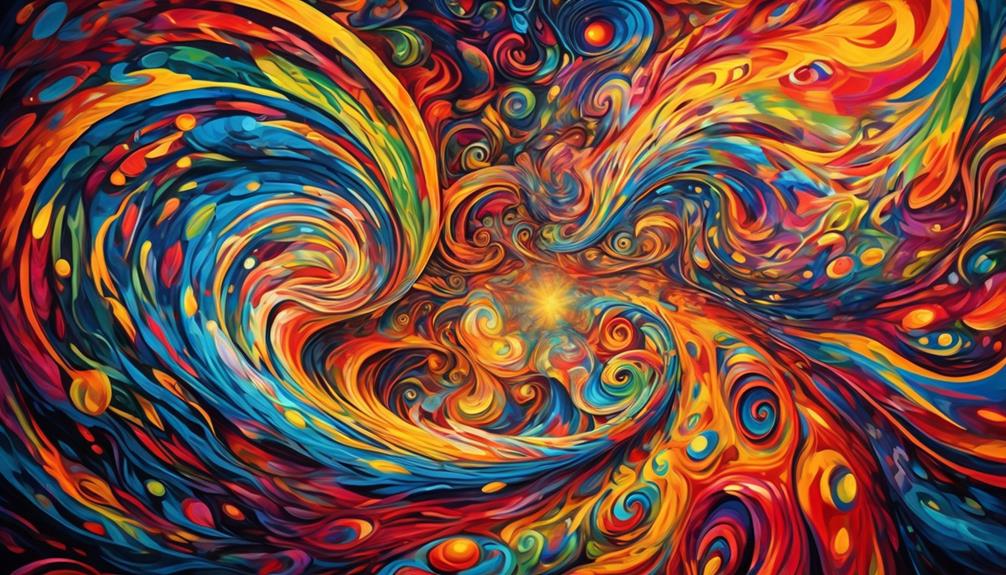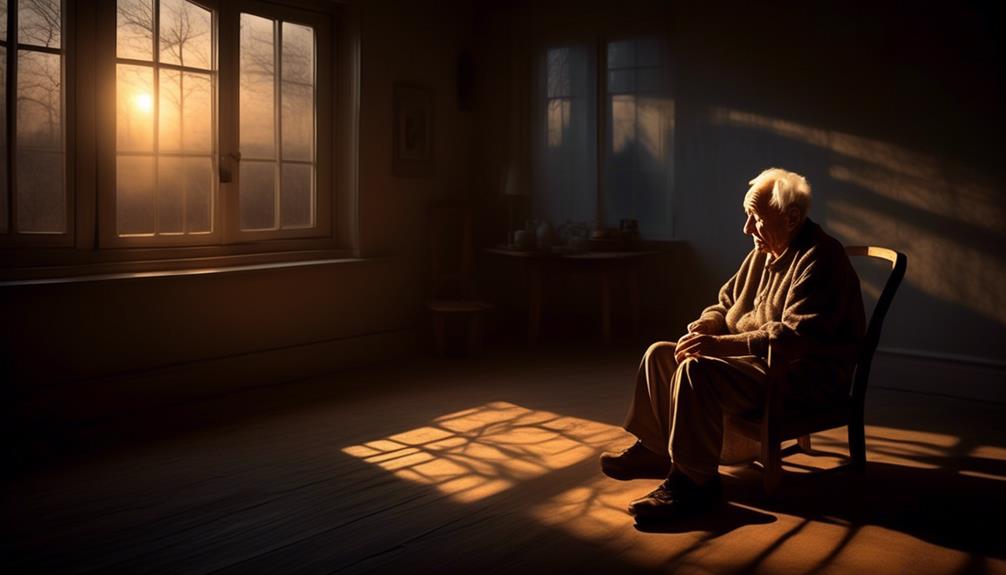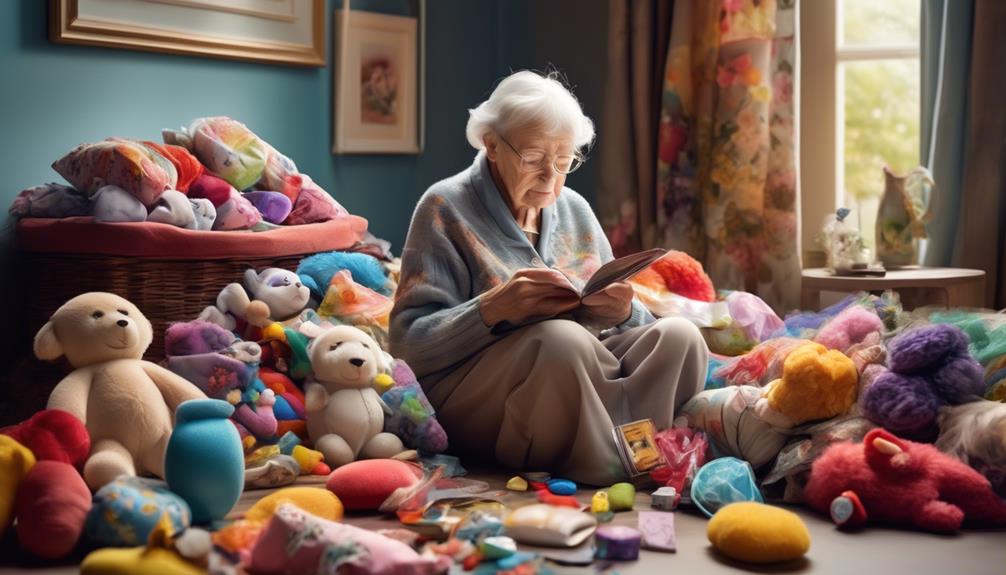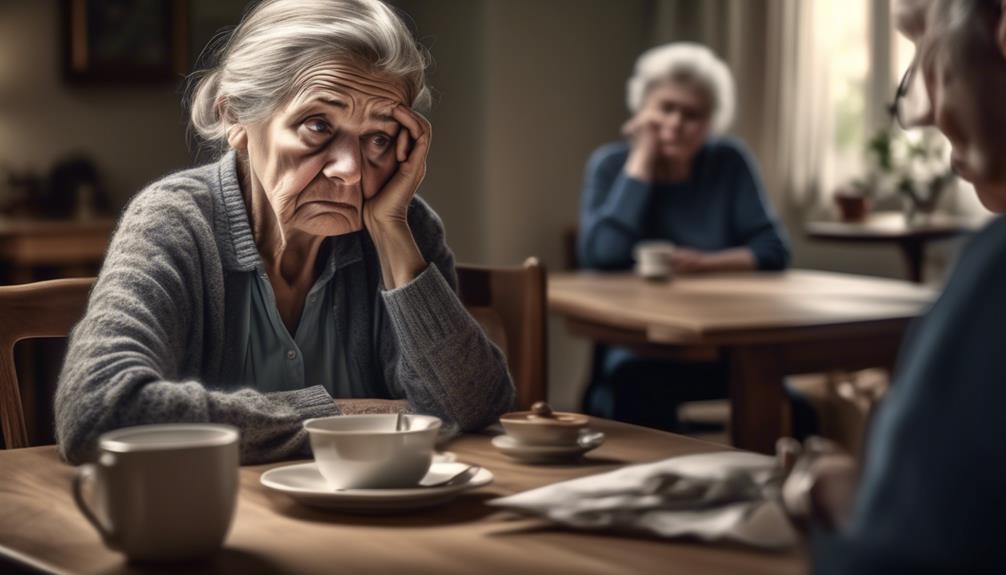Exploring the realm of visual hallucinations, our focus lies on the concept that certain types are more prevalent than others.
When pondering the most common visual hallucinations, it becomes apparent that a deeper understanding is required to unravel this intricate tapestry of the mind.
The complexities that lie within the various causes and manifestations of visual hallucinations beckon us to uncover the mysteries that shroud their prevalence.
Key Takeaways
- Visual hallucinations can be elementary or complex, involving simple or detailed images.
- Causes of visual hallucinations include primary psychotic disorders, brain tumors, and migraines.
- Neurodegenerative disorders and cerebrovascular diseases are associated with visual hallucinations.
- Treatment approaches depend on the underlying cause and may involve medication and non-pharmacological interventions.
Types of Visual Hallucinations
When categorizing types of visual hallucinations, we typically classify them based on their distinct perceptual characteristics. Visual hallucinations can be broadly categorized into two main types: elementary visual hallucinations and complex visual hallucinations.
Elementary visual hallucinations are simple, non-formed visual experiences that can include flashes of light, geometric shapes, or colors. On the other hand, complex visual hallucinations involve detailed images such as people, animals, or objects that may appear vivid and lifelike.
Medical professionals must conduct a thorough clinical evaluation to determine the cause of visual hallucinations. Common causes include neurodegenerative disorders, medication side effects, sleep disorders, and psychiatric conditions like schizophrenia. Diagnosis is crucial to differentiate visual hallucinations from other visual disturbances and to rule out underlying medical conditions.
Treatment approaches vary depending on the underlying cause and may include medication management, psychotherapy, or addressing any contributing factors.
One important clinical consideration is Charles Bonnet syndrome, a condition characterized by complex visual hallucinations in individuals with visual impairment. Understanding the different types of visual hallucinations is essential for accurate diagnosis and appropriate treatment planning.
Causes of Visual Hallucinations
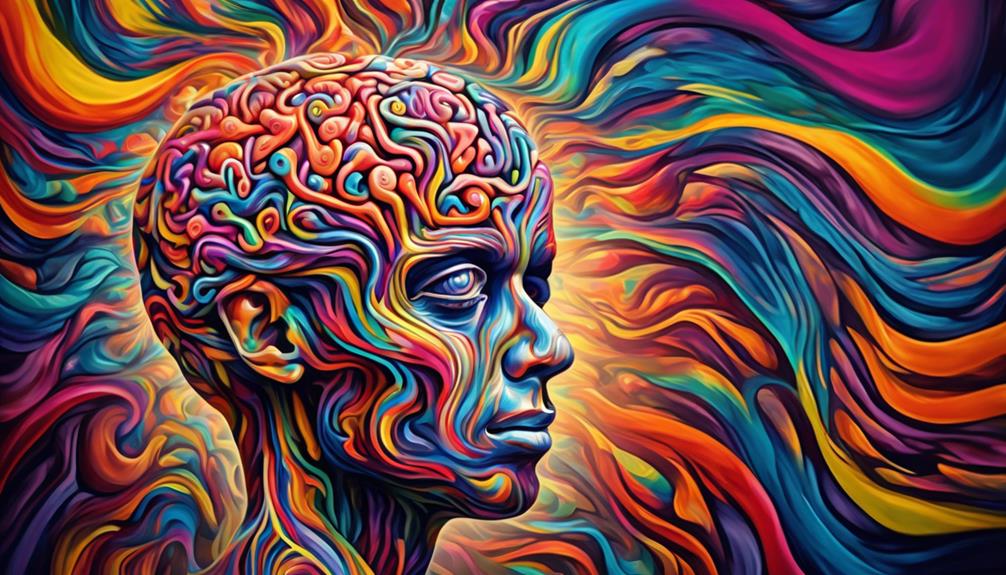
Moving from the discussion of types of visual hallucinations, our focus now shifts to exploring the various underlying causes of these perceptual disturbances. Understanding the causes of visual hallucinations is crucial in determining appropriate management strategies and interventions.
The following are some common causes of visual hallucinations:
- Primary Psychotic Disorders: Conditions like schizophrenia can lead to visual hallucinations due to disruptions in brain function affecting perception and cognition.
- Temporal Lobe Tumors: Tumors in the temporal lobe of the brain can impact the visual association areas, contributing to hallucinations.
- Brain Tumor: The presence of a brain tumor can directly affect the visual cortex, causing abnormal visual perceptions.
- Migraine Aura: Some individuals experiencing migraines may have visual hallucinations as part of their aura, which is a sensory disturbance preceding the headache.
These underlying etiologies highlight the diverse nature of conditions that can manifest as visual hallucinations, emphasizing the importance of a thorough evaluation to identify the specific cause.
Conditions Associated With Visual Hallucinations
Various medical conditions are associated with the occurrence of visual hallucinations. According to the Journal of Clinical Psychiatry, these conditions include neurodegenerative disorders like posterior cortical atrophy, which affects the back of the brain where visual processing occurs. Cerebrovascular diseases, such as strokes, can also lead to visual hallucinations by disrupting blood flow to the brain.
The Diagnostic and Statistical Manual of Mental Disorders (DSM-5) notes that visual hallucinations can be a symptom of various psychiatric disorders. It's crucial to differentiate these hallucinations from other visual disturbances caused by ophthalmic conditions or metabolic imbalances. Massachusetts General Hospital recommends a thorough evaluation of the patient's visual field and cognitive abilities to determine the underlying cause of visual hallucinations.
Treatment options may include cognitive behavioral therapy to address associated psychiatric conditions or specific interventions targeting the underlying medical condition. Proper diagnosis and management are essential in addressing visual hallucinations effectively.
Management of Visual Hallucinations
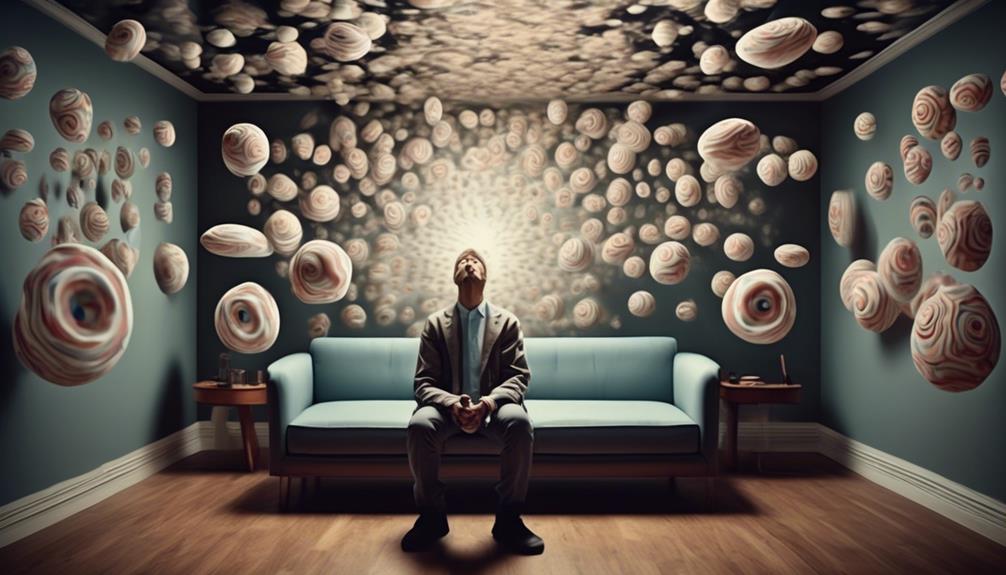
To effectively manage visual hallucinations, the treatment approach must be tailored to address the underlying cause identified. This could involve interventions ranging from antipsychotic medications for psychosis to non-pharmacological strategies for dementia-related hallucinations.
Treatment options for visual hallucinations depend on the underlying cause, such as addressing psychosis with antipsychotic medications or managing delirium with supportive care and addressing the underlying medical condition.
In cases of dementia-related visual hallucinations, non-pharmacological interventions like environmental modifications, reassurance, and caregiver education can be helpful, along with considering medications if necessary.
For hallucinations caused by sleep disorders, improving sleep hygiene and addressing any underlying sleep disturbances can be beneficial.
In some cases, reducing or discontinuing medications that may contribute to visual hallucinations, such as certain anticholinergic drugs or dopaminergic agents, may be recommended.
Effective management of visual hallucinations involves a thorough understanding of the underlying cause to provide appropriate treatment, ensuring individuals receive the support and care they need to cope with their experiences.
Etiology Determination for Visual Hallucinations
Upon evaluating visual hallucinations, a comprehensive differential diagnosis encompassing primary psychiatric disorders, neurological conditions, substance-induced causes, and metabolic or ophthalmic conditions is crucial to determine the etiology accurately. It is essential to consider the patient's medical history, conduct a thorough physical examination, and utilize additional diagnostic tests like EEG or brain imaging to distinguish between potential causes. The presence of accompanying symptoms like auditory hallucinations or alterations in consciousness can aid in narrowing down possible etiologies. Collaborative assessment with specialists from fields such as psychiatry, neurology, and ophthalmology may be necessary to establish a definitive diagnosis. Treatment and management strategies will be tailored based on identifying and addressing the underlying cause of the visual hallucinations. Below is a representation of the differential diagnosis for visual hallucinations:
| Primary Psychiatric Disorders | Neurological Conditions | Substance-Induced Causes |
|---|---|---|
| Schizophrenia | Epilepsy | Substance abuse |
| Brain tumors |
Frequently Asked Questions
What Are Typical Visual Hallucinations?
When discussing typical visual hallucinations, we must consider various factors such as the underlying conditions and contributing factors. Visual hallucinations can present differently based on the specific cause.
A thorough evaluation is crucial to accurately diagnose and treat these symptoms. It's essential to analyze demographic elements, pathogenesis, and associated symptoms for effective management.
Identifying the root cause of visual hallucinations aids in developing an appropriate treatment plan.
What Is the Most Common Thing to Hallucinate?
When we consider the most common thing to hallucinate, it's crucial to understand the diverse range of visual hallucinations individuals may experience. These can stem from various conditions like primary psychosis, delirium, migraines, or dementia.
What Are the Most Frequent Hallucinations?
When addressing the question of the most frequent hallucinations, it's crucial to consider various factors that could contribute to visual disturbances. By ruling out ophthalmic and neurological causes, we can focus on potential triggers like delirium, substance-induced hallucinosis, and different medical conditions.
Psychiatric disorders and external influences such as drugs or sleep disruptions must also be explored. Understanding these diverse sources is essential in accurately identifying and addressing the most common visual hallucinations.
What Are the 5 Hallucinations?
We can discuss the 5 types of hallucinations in detail.
Each type offers unique insights into the intricacies of the mind and perception.
By exploring these variations, we can gain a deeper understanding of how hallucinations manifest and their potential impact on individuals.
Through this exploration, we aim to provide a comprehensive overview that sheds light on the diverse nature of hallucinatory experiences.
Conclusion
In conclusion, visual hallucinations are a common symptom in various conditions such as schizophrenia, Parkinson's disease, and dementia. Proper diagnosis and treatment are essential in managing these hallucinations effectively.
By understanding the types, causes, and associated conditions of visual hallucinations, healthcare professionals can provide targeted interventions to improve the quality of life for individuals experiencing these symptoms.
Remember, knowledge is power when it comes to navigating the complexities of visual hallucinations.
